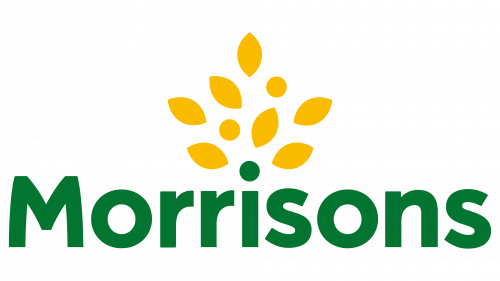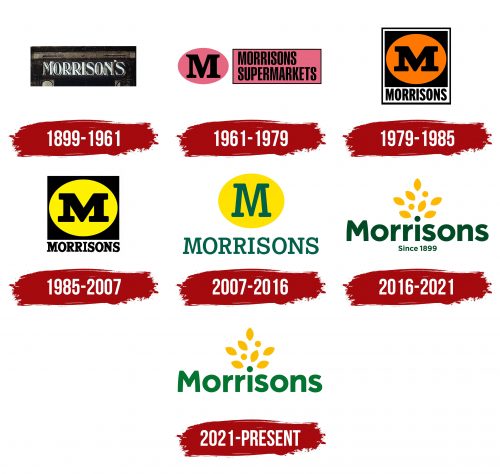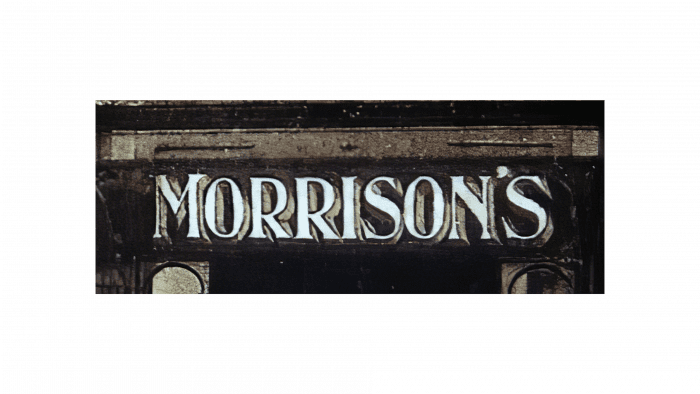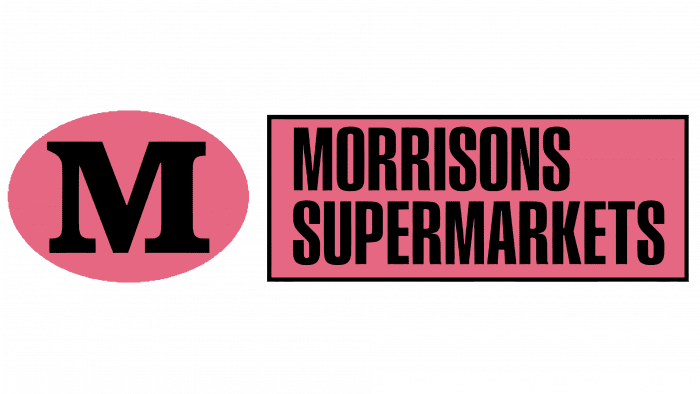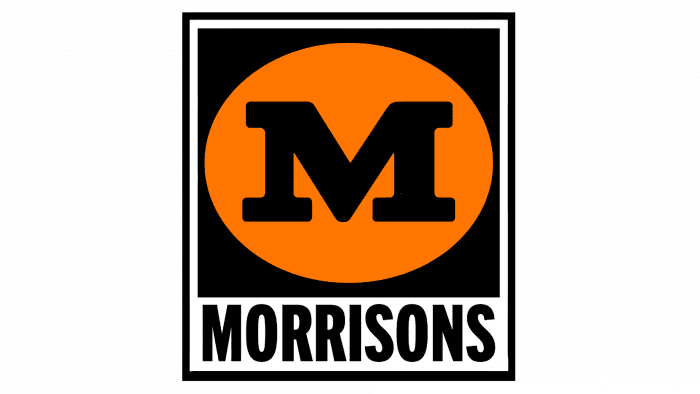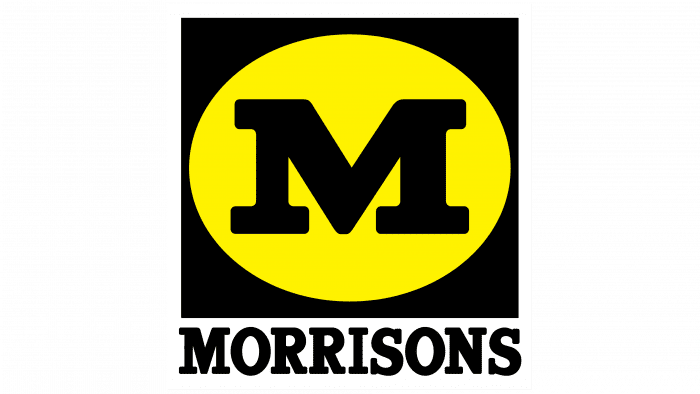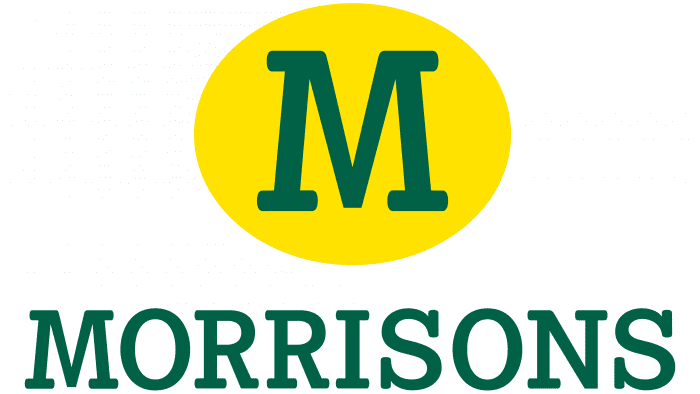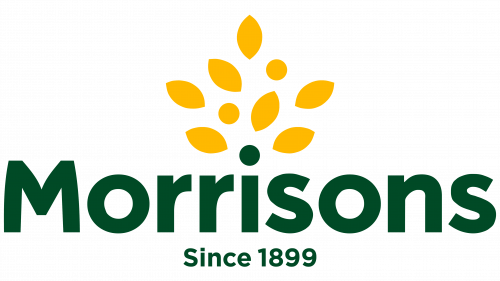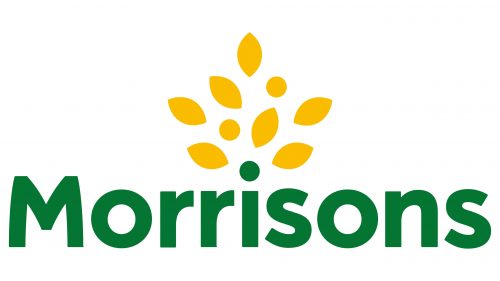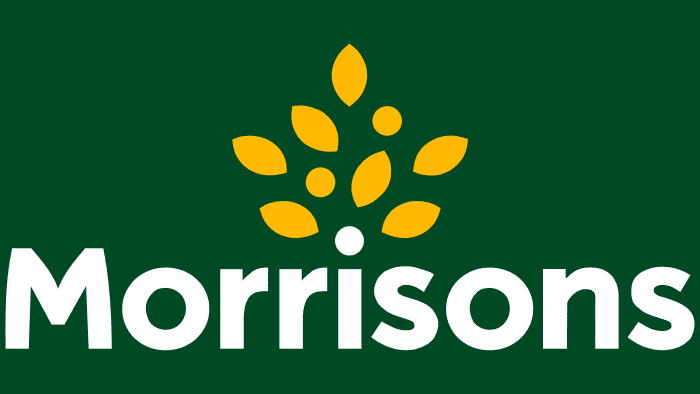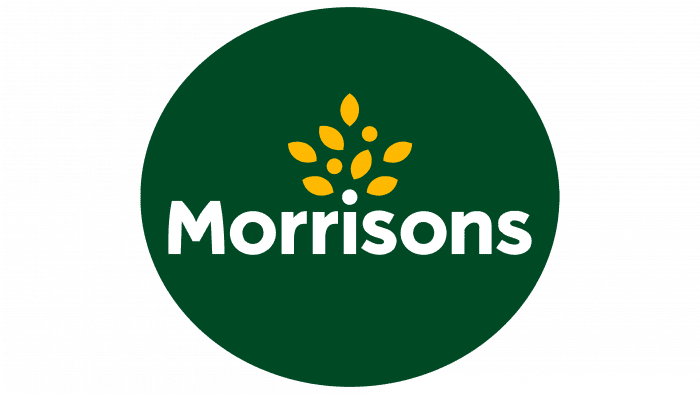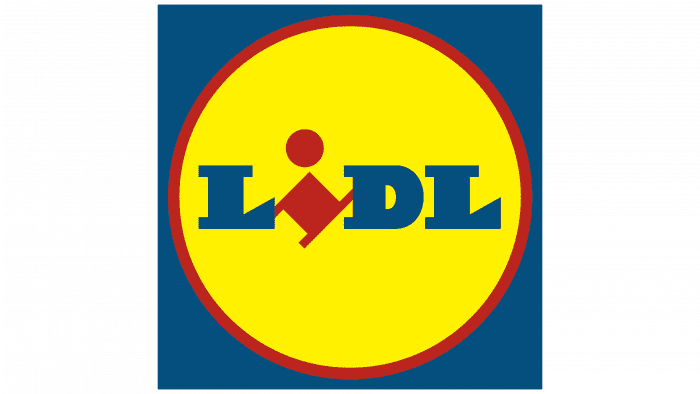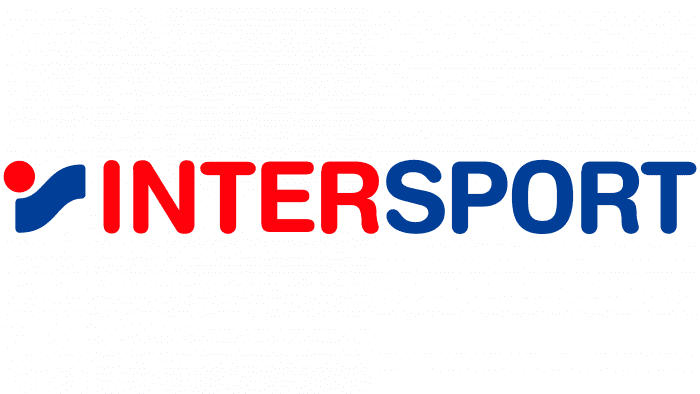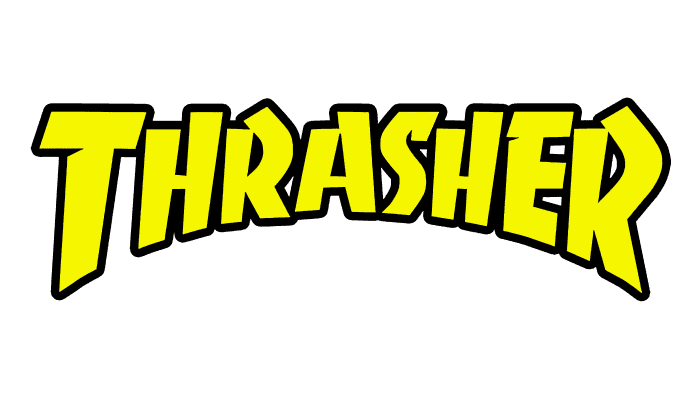The Morrisons logo represents a huge selection of natural, safe, and pleasant products. Each thing finds its shelf. The emblem shows the growth and spread of a company working to benefit its customers.
Morrisons: Brand overview
More than 490 stores in different UK cities, over 120 years of experience in the retail sector, and about 110 thousand employees characterize Morrisons at its best. It has overtaken other supermarket chains: it competes with large discounters such as Asda, Aldi, and Lidl. And all thanks to a well-thought-out marketing campaign that involves attracting buyers by lowering prices.
In 1899, William Morrison started a small business in Bradford, Yorkshire, selling eggs and butter from a stall. His vision and quality products set the foundation for what would become a major name in UK retail.
By the 1920s, Morrison expanded, opening a permanent store in Bradford. This began its growth from a simple market stall to a larger retail business.
After World War II, William’s son, Ken Morrison, took over. Under his leadership, the company grew rapidly during the 1950s and 1960s, expanding beyond Yorkshire. In 1961, Morrison’s went public, listing on the London Stock Exchange, which started a significant growth period.
In the 1960s and 1970s, innovative supermarket stores came to Bradford, offering a wide range of products, including fresh and chilled goods. This was a new concept at the time.
The 1980s and 1990s saw further expansion across Northern England and the Midlands. Acquiring Whelan Discount in 1978 and Safeway UK in 2004 greatly increased Morrison’s size and reach, turning it into a national retailer.
However, the acquisition of Safeway also presented challenges, especially in integrating the two companies. This led to a temporary dip in profits and market share. Morrison bounced back in the late 2000s by refurbishing stores, improving supply chains, and introducing new offerings like the “Market Street” concept with Amazon.
In the 2010s, Morrison adapted to changes in retail by starting online delivery and pickup services and focusing on fresh and local produce. The company has been working on providing great value and service, reducing prices, and investing in employee training and store improvements.
In 2021, Clayton, Dubilier & Rice (CD&R) bought Morrison’s for £7 billion, starting a new chapter for the company. Today, Morrison’s has nearly 500 stores across the UK and serves millions of customers every week. It’s known for its quality, service, and value.
Morrison’s story concerns growth, overcoming challenges, and staying committed to serving customers. With new owners, Morrison’s looks forward to a bright future, continuing to adapt and innovate in the retail industry.
Meaning and History
The retail chain takes steps to resist the pressure of growing competition. This is evidenced by her desire for rebranding, especially in recent years. If she did not change her style until the middle of the 20th century, now designers only do what they create new logos for Morrisons. After all, the main way to become a leader is to get customers’ attention.
What is Morrisons?
Morrisons ranks as the UK’s fourth largest chain of supermarkets, boasting a storied past that stretches to the dawn of the 20th century, with 497 supermarkets (in 2021). It was formed in 1899 by William Morrison, who gave the company his last name.
1899 – 1961
Originally, the company showcased an emblem featuring the name “MORRISON’S” prominently displayed above the entrances of its shops. This emblem employed a slender, straight-serif font that mirrored the stylistic preferences of the era, closely resembling the letterforms frequently seen on street signs of the time. The design was given a distinctive touch by making the trademark’s first letter slightly bigger than the other characters. This subtle differentiation made the logo stand out and gave the composition a distinctive flair, reflecting the brand’s identity and attention to detail in presenting itself to the public.
1961 – 1979
In 1961, a more complex logo appeared. It was divided into two disproportionate parts: on the left was an ellipse with a large “M,” and on the right was a rectangle with a two-line inscription “MORRISONS SUPERMARKETS.” A thin black line ran along the outline of the quadrangle. Simultaneously, the text was also black and looked contrasting against the background of dark pink geometric shapes.
1979 – 1985
After the redesign, the emblem’s general appearance has changed, although the main elements remain the same. A black rectangular frame runs along the border. Inside it, at the very bottom, is the word “MORRISONS” sans serif. A black square occupies the rest of the space with an orange oval and a large “M.”
1985 – 2007
An attempt to diversify the design did not yield any results. The oval went from orange to yellow, and the name of the supermarket chain began to be written in a compact serif typeface. Due to the new font, the size of the rectangular frame has decreased slightly.
2007 – 2016
The Morrisons owners understood that the identity development was at a standstill, which could hinder the attraction of clients of different nationalities. They urgently needed to do something, so they contacted the Landor branding agency for help. The specialists decided to keep the corporate identity but remove some elements. This is how the emblem appeared with a green letter “M” inside a yellow oval and the same green inscription “MORRISONS” at the bottom. All this was on a blank white background.
It’s worth noting that buyers didn’t like these experiments. Adding a new logo to store signs, employee uniforms, and elite shop windows was always met with negative reactions. Therefore 2016, the management was forced to cancel the selected design.
2016 – 2021
Faced with customers’ conservatism, the retail chain owners decided to prepare them in advance for the next rebranding. The first rumors of a corporate identity change began in 2015 when the company registered the new logo as intellectual property. The badge appeared in a supermarket the same year: the Merrion Center in Leeds became a test site. And only then the head of David Potts announced the forthcoming “transformation plan.”
The redesign was part of the Fresh Look program. It envisioned a sharp price decline and renewed the corporate identity in all stores, which would be completed by 2019. This would unite the entire chain and lure customers of other large discounters.
The plan succeeded, although Morrisons’ owners were deeply afraid of negative customer reactions. The company stopped working at a loss and even came out on top: its income grows yearly. Perhaps this is one reason why the retail chain is in no hurry to change the logo again to not shock the unprepared public.
2021 – today
From its humble beginnings in 1899 as a stall selling eggs and butter, Morrisons has evolved into one of the largest supermarket chains in the United Kingdom. Its logo has paralleled this transformation, highlighting its products’ freshness and care for customers, which are central to the company’s philosophy.
The 2021 iteration of the Morrisons logo retains much of its previous design, with some notable refinements. The reference to “since 1899” beneath the brand’s main text has been removed, and the green hue has been lightened, lending a more modern and vibrant look to the logo.
The logo’s central element, a stylized flower with seven bright yellow petals above the green text, remains unchanged. This flower suggests sunlight, warmth, and positivity, evoking the pleasure of shopping and hinting at the diversity and quality of the products offered by the supermarket.
The word “Morrisons” is presented in a recognizable sans-serif font that exudes professionalism. The green color of the text is associated with freshness, naturalness, and healthy eating, reflecting the retailer’s commitment to offering quality food products.
This emblem represents Morrisons’ journey from a local market stall to big British retail. The revised logo’s cleaner lines and updated color palette signify a forward-looking ethos while maintaining the legacy of a trusted brand.
Morrisons: Interesting Facts
Morrisons is a big supermarket chain in the UK, well-known for making much of its food, selling fresh items, and providing great customer service.
- Start and Growth: William Morrison started Morrisons in 1899 as a small butter and egg stall in Bradford, West Yorkshire. Over time, it grew from market stalls to small shops and supermarkets.
- Doing Things In-House: Morrisons stands out because it does a lot itself. It makes and packages its food products, helping it keep quality and lower prices.
- Market Street: Morrisons stores have a special section called “Market Street.” It’s like a traditional market, offering fresh bakery goods, meats, and fish.
- Growing by Buying Other Stores: Morrisons got much bigger when it bought Safeway in 2004. This helped it spread to southern England and Scotland, where it wasn’t well-known.
- Morrisons’ Products: Morrisons works hard on its product lines, from affordable to high-end. It keeps up with what customers want and changes products to fit.
- Helping the Community: Morrisons is active in its communities, working with charities and supporting local groups. During the COVID-19 pandemic, it helped those in need, including vulnerable shoppers and local food banks.
- Tech and Online Shopping: Morrisons has been investing in new technology and online shopping to make shopping easier and more efficient for its customers.
- Cafés Inside Stores: Many Morrisons stores have cafés where shoppers can grab a meal or snack. These have become popular spots for a quick bite.
- Awards: Morrisons has won many awards for its food, customer service, and reputation as a good workplace. It’s also recognized for its quality food and wine, animal welfare, and employee support.
Morrisons’ dedication to fresh food, control of its supply chain, and community involvement make it stand out in the UK supermarket scene.
Font and Colors
The designers found a middle ground—an option that satisfied most of the clients. It does not have geometric shapes, as in the previous emblems, but a pattern of orange leaves. The leaves look like the crown of a tree, and the letter “i” from the word “Morrisons” serves as the trunk. The style is generally similar to the British one—it looks luxurious and confident.
The Morrisons logo stands out with its modern and straightforward look, using a clean and geometric sans-serif font that feels simple yet confident. The font style is friendly and professional, similar to Crossten Bold or Rotunda Bold. A special touch is added to the capital “M” in the logo, making it unique and highlighting the brand’s distinctiveness.
This small tweak to the “M” catches the eye and shows Morrisons’ dedication to being different and noticeable in the market. The font’s bold and clear appearance reflects the supermarket’s goal to offer quality service in a clear-cut manner. It shows how Morrisons has grown from a simple market stand to a major retail player in the UK, keeping its core values while adopting a modern look. The logo’s mix of old and new styles shows Morrisons’ commitment to progress, honoring its past while focusing on today’s customer needs with efficiency and trustworthiness.
The logo update allowed the retailer to increase brand awareness. The font has completely changed: the serifs have disappeared, and all letters except the first “M” have become lowercase. The yellow-green color scheme is the only thing that now reminds the old design. But the designers moved away from the classics, opting for darker shades: Mikado Yellow (# FFC20E) for the leaf pattern and Castleton Green (# 00563F) for the chain’s name. In 2021, they made the green lighter to better match the bright yellow.
FAQ
What does the Morrisons logo mean?
The Morrisons logo promotes the idea of plenty for everyone, which is important to Morrisons. The logo shows a tree’s top growing from the letter “i.” This tree is special because it’s full of golden leaves or coins, which mean different things to different people.
This design suggests growth, success, and the natural world’s bounty, all things Morrisons wants to be known for. The golden leaves symbolize the high quality and variety found at Morrisons, like discovering a treasure. The coins could represent the good deals and savings you get by shopping there.
Many people recognize the tree as a symbol representing life, growth, and caring for the environment. Morrisons chose this design to show its commitment to offering fresh, quality items and caring for the environment. It tells the story of how Morrisons support communities, improve lives, and offer good value, all while being kind to the planet.
What font is the Morrisons logo?
Over time, the Morrisons logo has changed, showing how the brand and its identity have grown. At first, the Morrisons name was in a font like Rockwell Regular, which is known for its clear, strong look. This font gave off a vibe of being reliable and trustworthy, matching Morrisons’ reputation as a long-standing UK retailer.
But Morrisons wanted to update its look to be more modern and appealing, so they switched to a bolder and simpler font, fitting the bold, grotesque style. This new font is smooth and even, making the logo look cleaner and more up-to-date. It’s similar to fonts like Crossten Bold or Rotunda Bold, which are straightforward and bold without the detailed edges of older fonts like Rockwell. This makes the logo appear friendly yet professional.
This change aims to make Morrisons seem more inviting and strong as a brand. The new font is efficient and modern, attracting a broad audience by mixing current design trends with Morrisons’ long-standing promise of quality and value.
When was Morrisons founded?
Morrisons, a well-known name in the UK supermarket sector, dates back to 1899. In Bradford, William Morrison established the foundation of what would grow into one of the country’s leading retail chains. Initially focusing on selling eggs and butter, the business carved out its niche in the local market. What started as a modest venture evolved over the years into a significant presence in the retail industry.
For a considerable period, Morrisons maintained its status as a family-operated business, embedding its roots deeply in the values and traditions that came with such an enterprise. The close-knit nature of its operations allowed for a strong sense of identity and purpose, contributing to the company’s steady growth and success.
The turning point came when Morrisons decided to go public, selling its shares and marking a significant transition from its family-owned origins to a publicly traded entity. This move was pivotal in enabling the company to expand its reach and scale up its operations, paving the way for it to become the retail powerhouse it is today.
Who owns Morrisons supermarket?
Morrisons started as a small market stall in Bradford in 1899 and has grown into the UK’s fourth-largest supermarket chain. William Morrison founded the company and has played a significant role in the British grocery market for over a century.
In 2021, after a bidding war, Morrisons was bought by Clayton, Dubilier & Rice (CD&R), a private equity firm. This deal, worth about £7 billion ($9.5 billion), shifted Morrisons from a publicly traded company to a privately owned one. This change is important because it starts a new phase for Morrisons, where the company might change how it operates, plan for expansion, and aim to perform better financially with the support of CD&R.
The buyout by CD&R caught the attention of the business world and shoppers. Morrisons is a key player in the UK grocery scene, employing many people and operating a vast network of stores and supply chains. People are now watching how the change in ownership will affect Morrisons’ position in the market, what the stores offer, and how they will treat their employees.
When did the Morrisons logo change?
The Morrisons logo was significantly redesigned in 2016, creating a big change in the brand’s appearance. This redesign aimed to update the brand’s image, making it look more modern and attractive to more people. In 2021, there were some smaller updates to the logo, but these were just minor tweaks. So, it’s fair to say the major change happened in 2016, with the updates in 2021 just polishing and adding to that new look.
What is Morrisons slogan?
In May 2023, Morrisons returned its famous slogan, ‘More Reasons to Shop at Morrisons,’ with a new ad campaign. This was a big deal for the brand, as it revived a slogan and tune that customers loved before. This slogan shows Morrisons’ promise to offer good value, a wide range of products, and high quality, highlighting all the good things about shopping there.
Bringing back this slogan was about connecting with customers through something familiar and showing that Morrisons is still focused on serving them well. It was a way to remind people of Morrisons’ great shopping experience, including good prices, various products, excellent service, and community support.
This wasn’t just about remembering the past. It also ensured Morrisons’ message stayed fresh and appealing, showing that the store keeps up with the times while still holding on to its core values. This move shows Morrisons’ plan to keep growing and stay a favorite UK supermarket.
What is the history of Morrisons?
Morrisons started as a simple market stall run by William Morrison, an egg and butter merchant, marking the beginning of a major supermarket chain in the UK. With a strong spirit of innovation, William set Morrisons on a path of growth that expanded its offerings and reach. The company didn’t just add more products; it also opened stores nationwide.
Morrisons became known for introducing new ideas to grocery shopping and focusing on quality, value, and customer service. It grew by buying other grocery chains and investing in technology and fresh food, making the shopping experience better and different from other stores.
The story of Morrisons, from one stall to a big chain, shows its commitment to innovation and serving customers well, keeping William Morrison’s entrepreneurial spirit alive. Morrisons has played a big part in changing how people shop for groceries in the UK, which is known for its quality, value, and convenience.
Is Morrisons a brand?
Morrisons is a well-known brand in the British retail market, valued at 2.2 billion U.S. dollars in 2022. This was a significant increase from its 2018 value of 1.98 billion U.S. dollars. “brand value” is important because it shows how much a brand adds to a company’s overall worth. It considers how loyal customers are, how recognizable the brand is, and how much profit it can make.
The rise in Morrisons’ brand value over the years shows it has done well in growing its presence in the market, attracting more customers, and increasing its profits. This growth results from effective brand management, marketing strategies, and a commitment to quality, customer service, and innovation. Morrisons has made a strong name in the competitive supermarket sector, winning over consumers and establishing itself as a key player. The increase in its brand value proves that Morrisons continues to evolve and meet its customers’ changing needs, significantly contributing to its company’s value.
